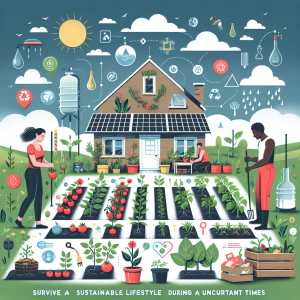Understanding Connectivity Challenges for Off-Grid Lifestyles
Establishing a stable, fast internet connection is a struggle for many living off-grid. These challenges mainly stem from geographical isolation, infrastructure deficits, and technological limitations. Remote locations often lack the financial incentive needed by telecommunications companies to deploy the necessary infrastructure. Therefore, many off-grid residents find themselves in areas devoid of wired broadband or reliable mobile network coverage.
Without traditional connectivity options, people living off-grid face difficulties in accessing the same digital services readily available to those in urban settings. Educational resources, healthcare services, and other internet-dependent amenities can be challenging to use effectively. Moreover, maintaining connections with friends and family or facilitating remote work opportunities can become cumbersome.
This problem is compounded by the technological barriers prevalent in these regions. Off-grid communities often have limited access to energy, relying on solar panels or generators that may not consistently support the power demands of modern internet solutions. Even when energy is not an issue, the available devices may not be optimized for data-efficient communications, leading to a drop in connectivity speeds and reliability.
Solutions for Enhancing Connectivity in Off-Grid Areas
Satellite Internet
One of the most significant advancements in connectivity for off-grid lifestyles has been satellite internet. Unlike traditional broadband, satellite internet does not depend on land-based infrastructure. Companies like SpaceX through its Starlink project, and others like Viasat, offer high-speed internet accessed with minimal local infrastructure. A clear line of sight to the sky can provide a stable internet connection where other solutions are unavailable.
Satellite technology has improved significantly in recent years, with reduced latency and increased data transfer rates, making it viable even for real-time applications like video calls or online gaming. However, this solution often involves higher initial setup costs and monthly fees, making affordability a concern for some.
Cellular Networks and Mobile Hotspots
Although cellular coverage can be sparse in remote regions, leveraging existing mobile networks is another possibility. Many individuals residing off-grid use mobile hotspots to access internet services when cellular signals are available. Enhancements in 4G LTE technology and the emerging roll-out of 5G could further improve this option, expanding coverage into more remote areas and offering faster speeds.
Innovative use of signal boosters and high-gain antennas can pull signals from distant towers, amplifying the connection available in even the most secluded locations. Partnerships between local communities and telecom companies could further facilitate the expansion of network coverage to traditionally underserved areas.
Mesh Networks
For community settings, establishing a mesh network can be both a cost-effective and innovative solution. Mesh networks involve multiple routers communicating with each other to extend internet coverage over large distances. Such systems can offer stable internet access by distributing the available bandwidth among multiple households or units.
Setting up a mesh network demands an initial investment in infrastructure. However, it circumvents the need for each individual household to have a separate connection to a distant internet source. Community-led initiatives leveraging mesh networks could thus improve connectivity significantly.
Internet of Things (IoT) and Edge Computing
The advent of IoT and edge computing technologies provides novel opportunities for enhanced connectivity in off-grid locations. IoT devices, often requiring minimal data transfer, can help manage resources efficiently, from energy consumption to agricultural monitoring. Paired with edge computing, data processing can be done locally rather than relying solely on cloud services, thus optimizing the limited internet bandwidth available.
These technologies require sturdy design to manage their functionality under fluctuating power supplies and diverse environmental conditions. However, their potential in maximizing the use of data, minimizing energy consumption, and optimizing bandwidth usage can be transformative for connectivity in off-grid setups.
Renewable Energy Solutions
An often overlooked aspect of connectivity is the availability of reliable energy sources to power the necessary devices. Renewable energy solutions such as solar panels, wind turbines, and even hydroelectric systems can provide the consistent power needed for internet technology. Solar-powered batteries and inverters ensure that connectivity devices run efficiently by providing energy even during periods of no sunlight.
Investments in efficient, localized renewable energy sources could overcome some of the energy-related barriers, supporting the operations of all the aforementioned internet solutions. These energy systems must be durable, cost-effective, and easy to maintain, driving both connectivity improvement and overall living conditions.
Community-Led Initiatives
Local communities hold the potential to play a pivotal role in solving connectivity issues. By forming cooperatives or working with non-profit organizations and tech companies, communities can invest in infrastructure that might be deemed non-viable by for-profit entities. This collaborative approach also fosters skill development within the community, empowering individuals with knowledge in IT and telecommunications critical for maintaining and troubleshooting solutions over time.
Additionally, such grassroots initiatives can influence policy decisions, pushing for regulatory changes or subsidies beneficial in facilitating infrastructural developments and making internet access a priority.
Keywords and SEO Strategies
To ensure this article appeals to readers actively seeking solutions for off-grid connectivity challenges, we focus on incorporating relevant keywords and phrases. These include “off-grid internet solutions,” “connectivity for remote areas,” “satellite internet for off-grid,” “renewable energy for internet,” and “mesh networks for rural connectivity.”
The article balances keyword usage without detracting from readability or quality, ensuring it ranks well in search engine results while providing valuable information. Engaging headings, subheadings, and concise paragraphs enhance the article’s structure and make it easy to navigate for readers. Moreover, internal links to related topics, such as renewable energy and IoT benefits, can be added to encourage readers to explore additional content, driving engagement and improving search engine optimization further.


